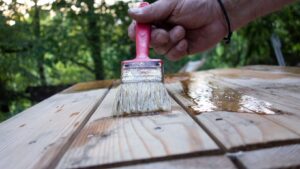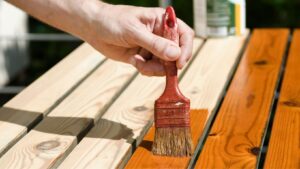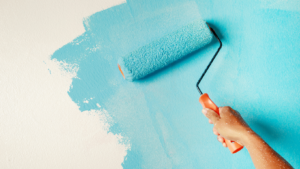
GEN RA 3462 a Cationic Emulsion For Wood Coatings
Discover how GEN RA 3462 cationic emulsion transforms wood coatings, offering superior adhesion, durability, and protection against knot bleeding and tannic block. Read for more information!
Indoor air pollution has become a more pressing concern in recent years due to its adverse effect on health. A study by the US Environmental Protection Agency (EPA) shows that the level of indoor air pollutants is 2 to 5 times higher than outdoor levels. One of the most notorious indoor air pollutants is formaldehyde. This strong-smelling colourless gas is commonly released from building materials and furnishings. Continuous exposure to this gas may cause serious respiratory tract problems. Therefore, indoor formaldehyde levels are strictly regulated – But what exactly is formaldehyde and how can Maha help limit this noxious gas?
Formaldehyde is a naturally
occurring chemical that is produced in small amounts by most living organisms.
It is an important building block to many other materials and chemical
compounds. Hence, formaldehyde is also manufactured on a large scale for use in
a number of different industries. Most manufactured formaldehyde is combined
with other substances to produce resins, which play an important role in the
production of adhesives, coatings, and plastics. Because of its presence in
these sources, formaldehyde can be found in nearly every indoor space. It is released into the air through a process called off-gassing. Furthermore,
secondary formation of formaldehyde
also can occur in air through the oxidation of some volatile organic compounds,
and combustion of fuel-burning appliances as well as tobacco.
Individuals respond differently to formaldehyde exposure. Some may develop immediate symptoms such as nausea and breathing difficulty, whereas others are not affected by the same degree of exposure. However, significant and prolonged exposure to airborne formaldehyde has been linked to some chronic respiratory diseases and certain types of cancer. Therefore, the World Health Organization (WHO) recommends a safety limit of 30 minutes of exposure with formaldehyde levels below 0.08 ppm. However, given that formaldehyde off-gassing might last for years, precautions must be taken to keep the level below the acceptable limit.

The removal of formaldehyde from indoor air has been the subject of numerous studies. The results suggest that a group of chemical compounds can serve as effective formaldehyde scavengers. One of the most effective embodiments is tris (hydroxymethyl) aminomethane. This white crystalline powder reportedly can lower airborne formaldehyde levels by 95%. Under normal indoor conditions, it reacts irreversibly with airborne formaldehyde, forming harmless conjugate compounds. Maha Chemicals on behalf of ANGUS Chemical Company offers a commercial-grade of tris (hydroxymethyl) aminomethane, under the trademark TRIS AMINO™.
TRIS AMINO™ crystals can be utilized in various ways to reduce indoor formaldehyde. For instance, it can be incorporated into a decorative paint formulation. With only 0.5% by weight of the total formulation, TRIS AMINO™ demonstrates significant efficiency in removing airborne formaldehyde by greater than 80%. Furthermore, the study also suggests that the scavenging properties of TRIS AMINO™ may last for 7 to 14 years. Thus, ensure long-last protection against the negative effects of formaldehyde. The use of TRIS AMINO™ in coating products also offers myriad benefits ranging from improving stability to corrosion control.
To understand more about the TRIS AMINO™ crystals applications and benefits please contact our team of professionals sales@maha.asia

Discover how GEN RA 3462 cationic emulsion transforms wood coatings, offering superior adhesion, durability, and protection against knot bleeding and tannic block. Read for more information!

Discover cost-effective alternatives to TPGDA and TMPTA for UV coatings, offering savings of up to 18% while enhancing yellowing resistance and ensuring a safer working environment.

Discover Quava™ MHEC, a cost-effective waterborne coatings formulation.
Copyright © 2023 Maha Chemicals (Asia) Pte Ltd